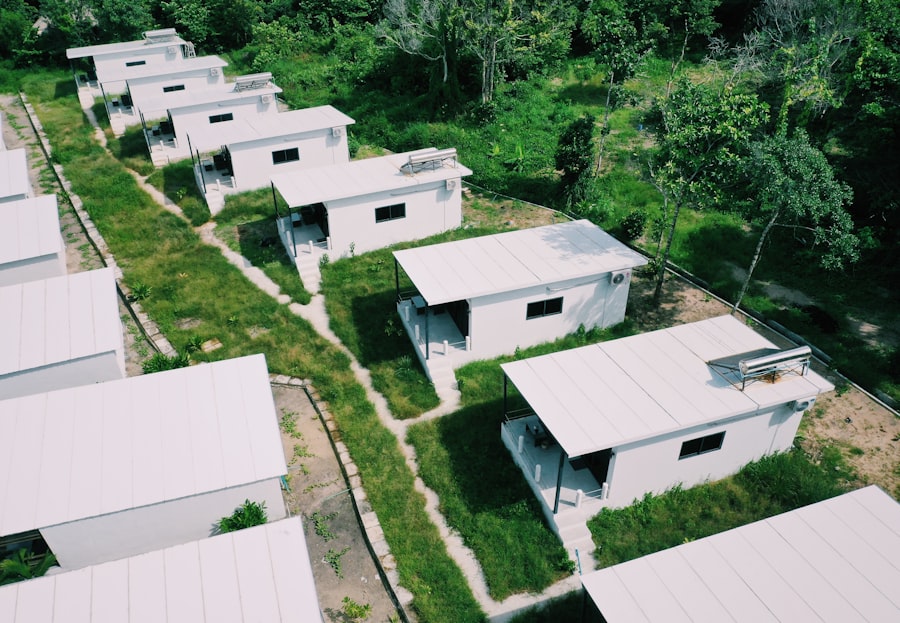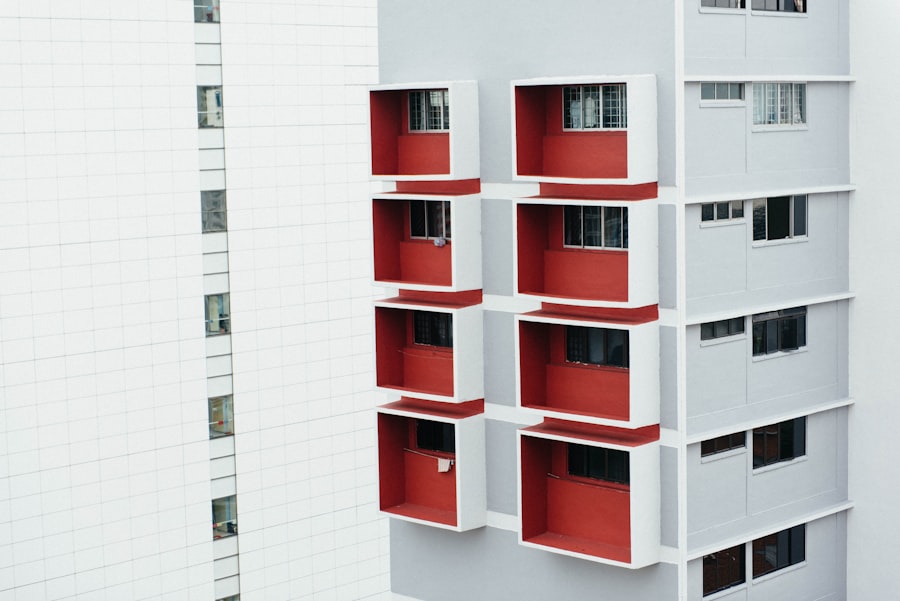In recent years, modular homes have gained significant traction in the housing market, emerging as a viable alternative to traditional construction methods. This surge in popularity can be attributed to several factors, including the increasing demand for affordable housing, the need for sustainable building practices, and advancements in construction technology. Unlike conventional homes, which are built entirely on-site, modular homes are prefabricated in sections or modules in a factory setting.
These modules are then transported to the building site and assembled, allowing for a quicker construction timeline and reduced labor costs. The appeal of modular homes extends beyond mere affordability; they also offer a level of quality control that is often difficult to achieve with traditional building methods. Factory construction allows for better oversight of materials and processes, leading to fewer defects and a more consistent product.
Additionally, modular homes can be designed to meet or exceed local building codes and energy efficiency standards, making them an attractive option for environmentally conscious consumers. As urban areas become increasingly crowded and housing prices soar, modular homes present a practical solution that addresses both economic and ecological concerns.
Key Takeaways
- Modular homes are becoming increasingly popular due to their affordability and flexibility.
- Renting a modular home offers cost-effective living with customizable options.
- Affordable modular homes can be found through specialized rental platforms and modular home parks.
- Maintenance of modular homes is generally straightforward, contributing to hassle-free living.
- Future trends indicate growth in modular home rentals with enhanced community features and sustainable designs.
Benefits of Renting a Modular Home
Renting a modular home comes with a myriad of benefits that cater to diverse lifestyles and financial situations. One of the most significant advantages is affordability. Modular homes typically cost less per square foot than their traditionally built counterparts, making them an attractive option for renters looking to maximize their living space without breaking the bank.
This affordability is particularly appealing to young professionals, families, and retirees who may be on fixed incomes or looking to save for future investments. Another key benefit of renting a modular home is flexibility. Many renters appreciate the ability to relocate without the long-term commitment associated with purchasing a home.
Modular homes are often situated in communities that offer various amenities, such as parks, recreational facilities, and social events, fostering a sense of belonging among residents. This flexibility allows individuals and families to adapt their living situations as their needs change, whether that means moving closer to work or seeking a different environment altogether.
Finding Affordable Modular Homes for Rent

The search for affordable modular homes for rent can be streamlined by utilizing various resources and strategies. Online platforms such as Zillow, Craigslist, and specialized rental websites provide extensive listings of available modular homes across different regions. These platforms often allow users to filter searches based on price range, location, and specific features, making it easier to find a suitable option that meets individual needs.
In addition to online resources, local real estate agents can be invaluable allies in the quest for affordable modular rentals. Agents with experience in modular housing can provide insights into neighborhoods that are known for their modular home communities and may have access to listings that are not widely advertised. Networking within community groups or social media platforms can also yield leads on available rentals, as many landlords prefer word-of-mouth referrals over traditional advertising methods.
By combining these approaches, prospective renters can increase their chances of finding an affordable modular home that fits their lifestyle.
Customization Options for Modular Homes
| Customization Option | Description | Typical Choices | Impact on Cost | Impact on Build Time |
|---|---|---|---|---|
| Floor Plan Layout | Adjusting the arrangement and number of rooms | Open concept, number of bedrooms, additional bathrooms | Moderate | Moderate |
| Exterior Finishes | Selection of siding, roofing, and exterior colors | Vinyl siding, wood, brick veneer, metal roofing | Low to Moderate | Low |
| Interior Finishes | Choice of flooring, cabinetry, countertops, and paint | Hardwood, tile, laminate, granite, quartz | Moderate to High | Moderate |
| Energy Efficiency Features | Incorporation of insulation, windows, and HVAC systems | High-efficiency windows, solar panels, advanced insulation | High | Moderate |
| Smart Home Technology | Integration of automated systems for lighting, security, and climate | Smart thermostats, security cameras, automated lighting | Moderate | Low to Moderate |
| Additional Modules | Adding extra rooms or specialized spaces | Sunrooms, garages, home offices, porches | High | High |
| Custom Windows and Doors | Selection of styles, sizes, and materials | Bay windows, sliding doors, custom wood doors | Moderate | Moderate |
One of the most appealing aspects of modular homes is the extensive customization options available to renters. While many modular homes come with standard layouts and finishes, renters often have the opportunity to personalize their living spaces according to their tastes and preferences. This customization can range from selecting paint colors and flooring materials to choosing kitchen appliances and cabinetry styles.
Such flexibility allows individuals to create a home that reflects their unique personality while still enjoying the benefits of modular construction. Moreover, some modular home manufacturers offer customizable floor plans that enable renters to modify the layout of their homes. This could include adding extra bedrooms, expanding living areas, or incorporating outdoor spaces such as decks or patios.
The ability to tailor a living space not only enhances comfort but also increases the overall satisfaction of renters who want their homes to feel like an extension of themselves. As the demand for personalized living experiences continues to grow, modular homes stand out as an ideal solution for those seeking both affordability and individuality.
The Process of Renting a Modular Home
Renting a modular home involves several steps that are similar to those associated with traditional rental processes but may include unique considerations specific to modular housing. The first step typically involves identifying potential properties through online listings or real estate agents. Once suitable options are found, prospective renters should schedule viewings to assess the condition of the home and its surroundings.
After selecting a preferred modular home, the next step is to complete an application process that may include providing personal information, employment verification, and references. It is essential for renters to understand the terms of the lease agreement thoroughly before signing. This includes details about rent payments, maintenance responsibilities, and any restrictions on modifications or alterations to the property.
Once the lease is signed, renters can prepare for their move-in date by coordinating logistics such as utility setup and furniture arrangements.
Maintenance and Upkeep of Modular Homes

Maintaining a modular home is generally straightforward due to their durable construction and modern materials. However, like any residence, regular upkeep is essential to ensure longevity and comfort. One critical aspect of maintenance involves routine inspections of the home’s exterior and interior systems.
This includes checking for any signs of wear or damage, such as leaks in plumbing or issues with electrical systems. Addressing these concerns promptly can prevent more significant problems down the line. Additionally, many modular homes are designed with energy efficiency in mind, which can lead to lower utility bills for renters.
Regular maintenance tasks such as cleaning gutters, servicing HVAC systems, and ensuring proper insulation can help maintain this efficiency over time. Renters should also be aware of any specific maintenance responsibilities outlined in their lease agreements; some landlords may handle exterior maintenance while placing the onus of interior upkeep on tenants. Understanding these responsibilities is crucial for maintaining a harmonious landlord-tenant relationship.
Community Living in Modular Home Parks
Modular home parks often foster a strong sense of community among residents, creating an environment where neighbors become friends and support systems are established. These parks typically feature clusters of modular homes arranged around shared amenities such as playgrounds, community centers, or recreational areas. Such communal spaces encourage social interaction and provide opportunities for residents to engage in activities together, from organized events like potlucks to informal gatherings.
Living in a modular home park can also offer practical benefits beyond social connections. Many parks have established rules and regulations that promote safety and cleanliness within the community. This structured environment can enhance the overall quality of life for residents by ensuring that shared spaces are well-maintained and that neighbors respect one another’s privacy and property rights.
For families with children or retirees seeking companionship, these communities can provide a nurturing atmosphere that enhances daily living experiences.
Future Trends in Modular Home Rentals
As the housing market continues to evolve, several trends are emerging within the realm of modular home rentals that could shape the future landscape of this sector. One notable trend is the increasing integration of smart home technology into modular designs. Features such as smart thermostats, security systems, and energy-efficient appliances are becoming more commonplace in new modular constructions, appealing to tech-savvy renters who prioritize convenience and sustainability.
Another trend gaining momentum is the focus on eco-friendly building practices within the modular home industry. As awareness of climate change grows, many manufacturers are adopting sustainable materials and energy-efficient designs that minimize environmental impact. This shift not only aligns with consumer preferences but also positions modular homes as a forward-thinking solution in an increasingly competitive housing market.
As these trends continue to develop, they will likely enhance the appeal of modular homes for renters seeking modern living solutions that align with their values and lifestyles.



